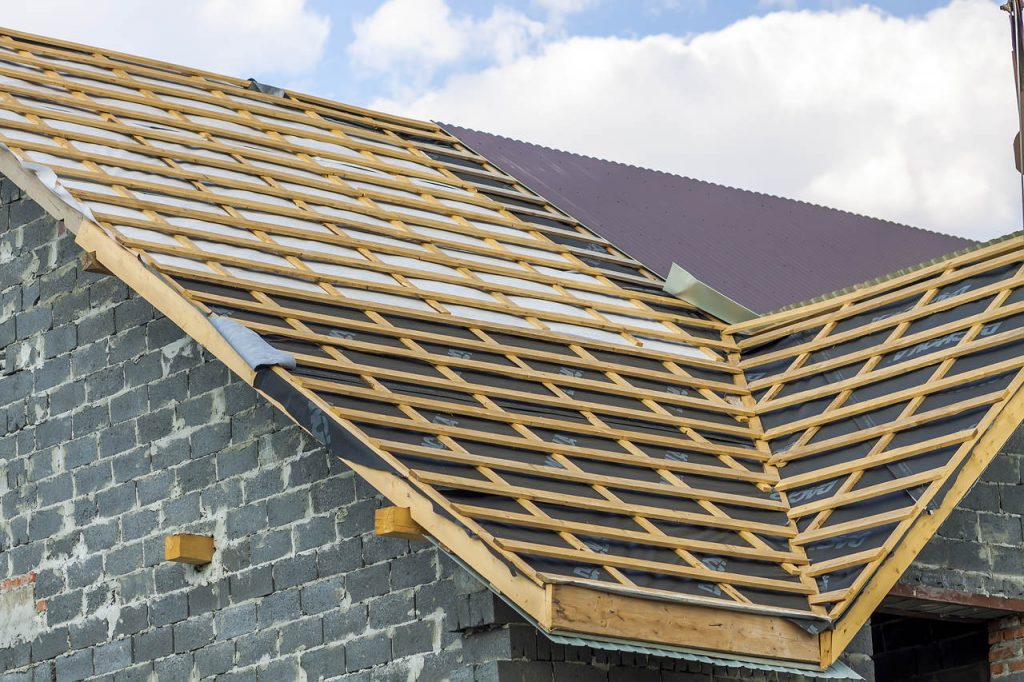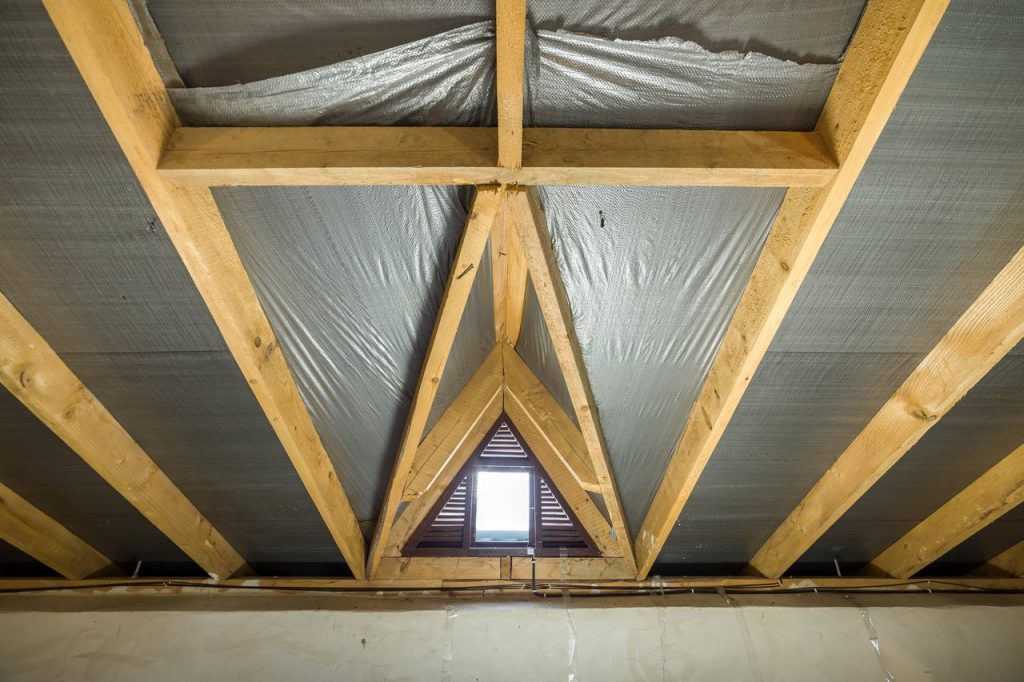Every roof is a complex structure that consists of several layers – the roofing membrane is one of them. The fact that it is not the external lining and that it is not visible does not make it any less important. The primary two functions of this component are:
Every membrane has to be properly constructed, in order to fulfill its tasks. It consists of three layers. The most important of them is so called functional layer, which lets water vapour molecules through on one side. The two outer layers have the task of protecting the functional layer from damage
The parameters you need to pay attention to are, first of all:
The first element, which is quite obvious anyway, is laying the foil with its right side. Most often those sides are marked in an appropriate way. A very popular way of marking them is printing letters on one side only. It is that side that has to be laid facing outwards
Before we start installing roofing membrane on rafters, we need to prepare them properly. The basic issue is to wait for the impregnant applied on the wood to dry. It is often used to grind the inner edges of the rafters, so that the membrane is not torn during nailing

One should stretch the initial roofing foil on rafters. It should be fixed with roofing staples or wide-headed nails. Remember that nails with too small diameter of heads may result in insufficient adhesion of the membrane and local tears of the material
Contrary to what one might think, stretching the membrane very tightly and placing it stiffly on the rafters is a bad solution – it will encourage tearing of the membrane in the future. It is best to fix the material so that it hangs gently. Thanks to the overhang, rainwater will flow between the rafters and not along the rafters

Always start laying the membrane from the bottom, on the eaves. When laying it in the opposite direction, there is a risk of water penetration between individual strips. Selection of appropriate overlaps between the layers depends on the roof pitch. Most often it is assumed that it has to be from 15 to 20 cm of the installed material. Sometimes the joints are additionally secured with sealing tapes
One of the most frequently mentioned reasons for tearing of the roof membrane material is selection of nails with too small heads. Also, sliding it over the edges of uncut rafters can have a bad effect. The membrane will also get damaged if the roofers are not careful enough while doing their work. If the material is torn on a large surface, it is worth replacing the membrane with a new one, so that it will not cause problems in the future.